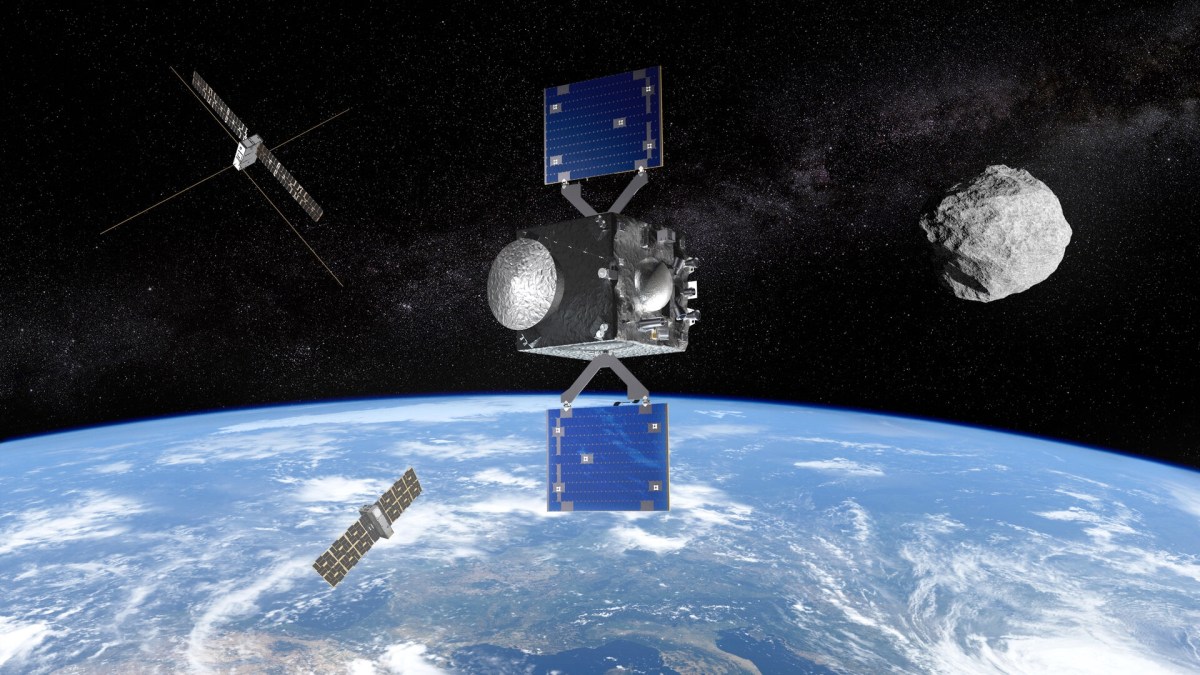MILAN — The European Space Agency signed a contract with OHB to begin work on an asteroid mission, but a decision on full funding for the mission is still more than a year away.
In a ceremony during the International Astronautical Congress (IAC) here Oct. 17, officials with ESA and OHB Italia signed a contract worth 63 million euros ($68 million) for preparatory work on a mission called Ramses, or Rapid Apophis Mission for Space Safety, to the asteroid Apophis ahead of that asteroid’s close flyby of the Earth in April 2029.
The mission will use the spacecraft design developed for the Hera mission that launched Oct. 7 to the asteroid Didymos and its moon Dimorphos, the target of NASA’s Double Asteroid Redirection Test. Ramses will be a simplified version of Hera that uses a single-string architecture to minimize its cost.
ESA member states have yet to formally approve full funding for Ramses, a decision they will make at their next ministerial meeting in late 2025. However, to have Ramses ready for a launch in early 2028 — required so that the spacecraft can arrive at Apophis about two months before it flies by Earth — work on the mission must begin before the ministerial.
The contract will allow OHB, the prime contractor for both Hera and Ramses, to begin procuring long-lead items and finalize the design of the spacecraft. It will also support work to coordinate the mission with those proposed by other agencies to study Apophis before or after the April 2029 flyby.
At a conference in July, around the time ESA announced its intent to support initial work on Ramses, project scientist Patrick Michel said that the preparatory work would mature the spacecraft design through a preliminary design review. That will include determining what payloads from potential international partners, which include India, Japan, South Korea and the United States, are incorporated onto the mission.
ESA said the funding for the Ramses contract came from its General Support Technology Program and Space Safety Program. About 20 million euros came from Hera, which came in under budget.
“By developing and launching the Hera mission on time and under budget, we have demonstrated that ESA and its industrial and scientific partners can meet the challenging deadlines required by asteroid missions,” said Paolo Martino of ESA, leader of the Ramses project, in a statement. “With Ramses we are raising the bar even further, so we need to act now to ensure that, if our member states decide to support the mission in 2025, we can hit the ground running and reach Apophis in time.”
ESA did not disclose the estimated total cost of Ramses. The Hera mission cost the agency 363 million euros.
